[GroupBuy] E-commerce Conversion-Focused UI Template – Jaka Šmid
$197.00 Original price was: $197.00.$35.00Current price is: $35.00.
The E-commerce Conversion-Focused UI Template redefines how online businesses approach user experience, providing a meticulously crafted and data-driven solution engineered to amplify sales and significantly boost average order values through intelligent design and strategic implementation.
Table of Contents
E-commerce Conversion-Focused UI Template
The landscape of e-commerce is relentlessly competitive, demanding more than just an attractive website; it requires a digital storefront designed with surgical precision to convert browsers into buyers and maximize every potential transaction. The E-commerce Conversion-Focused UI Template stands as a beacon in this challenging environment, offering a comprehensive suite of design elements and strategic blueprints forged from extensive A/B testing on high-revenue e-commerce stores. This is not merely a collection of pre-designed pages; it is a meticulously engineered ecosystem where every pixel and placement is optimized to guide the customer journey, eliminate friction, and encourage spending. The core philosophy underpinning this template is a profound understanding of consumer psychology, translated into user interface and user experience (UI/UX) choices that subtly nudge users towards conversion.
From the moment a potential customer lands on a page, through their browsing experience, product consideration, and ultimately, the checkout process, the template orchestrates a seamless, persuasive, and highly efficient path to purchase, ensuring that businesses not only meet but exceed their revenue goals. It embodies the culmination of vast empirical knowledge, transforming abstract conversion theories into actionable, deployable design solutions that directly impact the bottom line. This holistic approach ensures that the entire shopping experience is not just visually appealing but functionally superior in its singular mission: maximizing conversion rates and average order values through intelligent, user-centric design.
Comprehensive UI/UX Design for Unparalleled Conversion
At the heart of the E-commerce Conversion-Focused UI Template lies its unparalleled commitment to comprehensive UI/UX design, meticulously tailored for conversion optimization across every touchpoint. This template goes far beyond generic design aesthetics, instead offering over 45+ dedicated screens for both desktop and mobile devices, ensuring a frictionless and consistent shopping experience regardless of how a customer chooses to interact with your store. The sheer breadth of these screens covers every imaginable scenario within the e-commerce journey, from engaging homepages and intuitive category listings to detailed product pages, shopping cart interfaces, and nuanced account management sections. Each screen is not merely duplicated or resized for different devices; rather, it is thoughtfully adapted and optimized to leverage the unique capabilities and user habits associated with desktop computing versus mobile browsing. This commitment to responsive and adaptive design means that whether a customer is leisurely browsing on a large monitor or making a quick purchase on a smartphone, the interface remains fluid, navigable, and inherently persuasive.
The meticulous crafting of these design elements reflects a deep understanding of user behavior and cognitive psychology in the digital realm. Every button placement, every form field, every visual cue is purposefully designed to minimize cognitive load, build trust, and reduce perceived effort during the shopping process. For instance, call-to-action buttons are strategically placed and designed to stand out, guiding the user towards the desired next step without being intrusive. Product images and descriptions are presented in a way that maximizes clarity and emotional appeal, fostering a strong desire to purchase. The template also incorporates subtle psychological triggers, such as social proof elements, scarcity indicators, and urgency countdowns, all seamlessly integrated into the UI without disrupting the overall user experience. This level of detail in design helps to preemptively address common points of user abandonment, creating a streamlined and reassuring path from discovery to decision.
My personal analysis reveals that this level of pre-optimization is invaluable for businesses. Instead of spending countless hours and significant capital on iterative A/B testing to refine basic UI elements, businesses can deploy a template that has already absorbed the lessons from hundreds of high-stakes, real-world experiments. The time saved in design and testing cycles can be reallocated to product development, marketing, or customer service, significantly accelerating growth. Furthermore, the inherent consistency across all 45+ screens fosters a sense of professionalism and reliability, crucial factors in building customer trust in an online environment where credibility can often be fleeting. This holistic and deeply informed approach to UI/UX design effectively transforms a website from a static brochure into a dynamic, persuasive sales engine, directly impacting conversion rates by intuitively guiding users through their buying journey with minimal friction and maximum appeal.
The true genius lies in how this comprehensive design framework proactively addresses fundamental e-commerce challenges. Many online stores suffer from disjointed user experiences where a customer’s journey is fragmented across different page layouts or unresponsive elements, leading to frustration and abandonment. The E-commerce Conversion-Focused UI Template eliminates this by providing a unified, consistent, and highly intuitive navigation system. This consistency not only aids user comprehension but also builds familiarity and trust, as users quickly learn what to expect from interaction to interaction.
This seamless flow is particularly critical during moments of decision, such as adding to cart or proceeding to checkout, where even minor discrepancies or difficulties can lead to a lost sale. The template’s design preempts these issues by making the desired actions unambiguous and effortless, thereby maximizing the likelihood of successful conversion. It’s about designing for human predictability, anticipating needs, and removing obstacles before they even become apparent to the user, a masterful demonstration of proactive, conversion-first UI/UX thinking.
Mastering Average Order Value with Advanced Upsell Strategies
A pivotal feature of the E-commerce Conversion-Focused UI Template is its laser focus on boosting Average Order Value (AOV) through an impressive array of advanced upsell strategies. Recognizing that converting a customer is only half the battle, the template integrates over 34+ proven upsell solutions, meticulously derived from hundreds of A/B tests conducted on leading e-commerce platforms generating over $100MM+ in revenue. This vast repository of empirically validated strategies provides businesses with a powerful toolkit to encourage customers to spend more once they’ve committed to a purchase. It moves beyond generic “you might also like” suggestions, instead implementing sophisticated, psychologically-driven upsell tactics designed to feel like helpful recommendations rather than aggressive sales pitches. These strategies are interwoven throughout the customer journey, from product page suggestions to pre-checkout add-ons and post-purchase offers, ensuring maximum effectiveness at critical decision points.
The genius of these solutions lies in their strategic placement and compelling presentation. For instance, the template might guide users to consider a premium version of a chosen product, offer complementary items at a slightly reduced price when purchased together, or present valuable add-ons during the checkout process itself. The key is relevance and timing. By understanding when and how a customer is most receptive to spending more, the template positions these upsells in a way that feels organic and genuinely beneficial. This is not about tricking customers but about providing legitimate value that enhances their initial purchase, whether through an upgrade, a bundle, or a related accessory. The insights from millions of customer interactions on high-revenue stores mean that these upsell tactics are not theoretical; they are hard-won lessons in consumer behavior, packaged for immediate implementation and maximum impact.
My personal analysis of these advanced upsell strategies reveals a profound understanding of the sales funnel’s later stages. Many businesses focus heavily on attracting traffic and initial conversions, often neglecting the immense potential of increasing AOV post-initial decision. By integrating pre-tested solutions, the E-commerce Conversion-Focused UI Template empowers businesses to capture additional revenue that might otherwise be left on the table.
The sheer variety of 34+ solutions means that businesses have the flexibility to experiment and find what resonates best with their specific product lines and customer base, without having to devise these strategies from scratch. This not only significantly boosts immediate revenue but also subtly enhances the perceived value of the customer’s overall purchase, as they often feel as though they’ve made a more complete or advantageous acquisition. The strategic implementation of these proven upsell techniques is a clear differentiator, transforming a standard purchase into a comprehensive solution for the customer and a significantly larger transaction for the business.
Here’s an illustrative table summarizing some of the core upsell types integrated into the template and their benefits:
| Upsell Type | Mechanism | Core Benefit | Example Scenario (Template Application) |
|---|---|---|---|
| Post-Purchase Offers | Presented immediately after checkout confirmation | Captures impulse buys, leverages buyer’s high commitment | “Wait! Get our premium warranty plan for 20% off your purchase total.” |
| Order Bumps | Small, relevant add-ons presented directly on the checkout page | Low friction, boosts AOV incrementally per transaction | “Add environmentally friendly gift wrapping for just $3.99.” |
| Product Bundling | Grouping complementary items or services | Perceived value increase, encourages larger purchase | “Buy our espresso machine, get a premium coffee bean sampler at 30% off.” |
| Quantity Discounts | Price reduction for purchasing multiple units | Drives bulk purchases, increases inventory turnover | “Get 15% off when you buy 2, or 25% off when you buy 4 of this item.” |
| Tiered Upgrades | Proposing a higher-priced, more feature-rich version | Maximizes value for discerning customers | “Upgrade to the Pro version for enhanced features and extended support.” |
| Accessory Suggestions | Prompting complementary products alongside the main item | Completes the solution for the customer, adds revenue | “Customers also bought: Protective Case for your new device.” |
| Next-Order Prompts | Offering a discount or incentive on a future purchase | Encourages repeat business, increases customer lifetime value | “Complete this order and receive a $15 coupon for your next purchase!” |
This comprehensive suite of scientifically validated upsell strategies embedded within the E-commerce Conversion-Focused UI Template is a game-changer. It represents a shift from speculative sales tactics to a data-driven art form, ensuring that every opportunity to enhance a transaction is recognized and optimized.
The Ultimate Optimized Checkout Funnel Design
The checkout funnel is arguably the most critical juncture in the e-commerce journey, a delicate phase where even the slightest friction can result in significant abandonment rates. The E-commerce Conversion-Focused UI Template addresses this challenge head-on with what is described as “The ultimate and never-before-seen checkout funnel.” This bold claim is substantiated by its meticulous design, where every granular detail, from the layout of form fields to the strategic placement of last-minute upsells and order bumps, is expertly crafted to guide potential customers through the final stages of their purchase journey with unparalleled smoothness. The overarching goal is not merely to get the customer to complete the transaction but to encourage them to spend as much as possible at this crucial stage, all without compromising or inconveniencing their overall customer experience. This requires a masterful balance between conversion optimization and user satisfaction, a balance the template purports to have perfected.
The innovative design principles applied to this checkout funnel target common abandonment triggers with precision. For instance, excessively long or confusing form fields are simplified and streamlined, employing smart auto-fill functionalities and clear error validation messages to minimize user frustration. Progress indicators are prominently displayed, reassuring customers of their journey’s brevity and guiding them seamlessly through each step. Trust signals—such as secure payment badges, positive testimonials, and clear return policies—are strategically placed to alleviate any lingering doubts about purchasing from the store. This holistic approach to trust-building ensures that customers feel secure and confident as they finalize their purchase, significantly reducing the likelihood of last-minute second thoughts that often lead to abandoned carts.
My personal insights affirm the profound impact of a truly optimized checkout. A checkout process that is intuitive, secure, and devoid of unnecessary distractions can transform a hesitant buyer into a committed one. The template’s emphasis on integrating order bumps and final upsells at this stage is particularly noteworthy. These are not haphazard additions but psychologically informed nudges designed to capture additional value right before the transaction is finalized. For example, a small, highly relevant add-on (like a warranty or a complementary digital guide) can be presented as an effortless “one-click” addition, capitalized on the customer’s heightened commitment to the primary purchase. This strategic placement, honed through rigorous A/B testing, ensures that these additions enhance the customer’s original intent rather than distracting from it, thereby boosting average order value without creating friction.
Furthermore, the template’s checkout design acknowledges the pivotal role of transparency and clarity. Hidden fees, unexpected shipping costs, or convoluted return policies are common culprits for late-stage abandonment. The “ultimate” checkout funnels within this template are engineered to provide complete transparency regarding costs, delivery timelines, and post-purchase support from the outset. This pre-emptive approach to managing customer expectations builds significant trust and reduces the psychological “cost” of the purchase, making the final click feel like a confident decision rather than a leap of faith. By meticulously engineering a checkout process that prioritizes user experience while simultaneously integrating revenue-enhancing opportunities, the E-commerce Conversion-Focused UI Template transforms a potentially vulnerable stage of the buying journey into one of its strongest conversion points. It’s an exemplary demonstration of how fine-tuned design can ethically and effectively guide customers towards completing, and even expanding, their transactions.
Jaka Šmid
Behind the innovative architecture and data-driven efficacy of the E-commerce Conversion-Focused UI Template stands Jaka Šmid, an acclaimed figure revered as an elite conversion designer. His product is not merely a collection of aesthetically pleasing designs; it is a distillation of real-world expertise, empirical insights, and a deep-seated understanding of what truly drives online sales. Jaka Šmid‘s expertise is not rooted in theoretical models but forged in the crucible of extensive, high-stakes A/B testing across multi-million dollar e-commerce platforms. This hands-on, results-oriented background is precisely what imbues the template with its profound practical value, transforming it from a static asset into a dynamic blueprint for revenue generation.
Clients who leverage this template are not just adopting a design; they are inheriting a proven methodology and a strategic advantage developed by someone who has navigated the complexities of maximizing conversions for some of the most demanding online businesses. His approach transcends superficial design choices, diving deep into the psychological underpinnings of consumer behavior, making every element within the template a deliberate decision aimed squarely at enhancing the bottom line. This level of informed design is what sets the product apart, delivering not just a template but a tangible pathway to optimized e-commerce performance.
Expert Insights and Unleashing Conversion Genius
A standout value proposition of the E-commerce Conversion-Focused UI Template is the unparalleled access it grants users to Jaka Šmid‘s expert knowledge. This isn’t just a design package; it’s an educational masterclass, allowing users to “Unlock my expert insights with 127+ detailed expert advice.” These insights go far beyond typical design documentation, delving into the strategic “why” behind each design element. Jaka Šmid meticulously breaks down the importance of every feature, how to implement it effectively, and crucially, what its intended impact is on conversion rates and average order value. This exclusive look into the thought process of an elite conversion designer offers an extraordinary advantage, a shortcut to understanding the nuances of high-performance e-commerce UI/UX without years of personal experimentation and expensive A/B testing. He explains the rationale for every button, every layout choice, every textual prompt, allowing users to grasp the underlying psychological and behavioral principles at play.
The value asserted for these insights—”worth thousands of dollars”—is not hyperbolic when considering the costly nature of trial-and-error in e-commerce optimization. Businesses often spend significant sums on consultants, dedicated conversion rate optimization (CRO) teams, or extensive split-testing platforms only to achieve incremental gains. Jaka Šmid‘s bundled advice effectively front-loads years of hard-won knowledge, providing users with a comprehensive guide to deploying the template’s features with maximum efficacy. This guidance covers everything from macro-level strategic decisions, such as the overall flow of the customer journey, down to micro-level adjustments, like the optimal color for a call-to-action button or the persuasive power of specific microcopy. The depth of explanation ensures that users don’t just passively apply the design but actively understand why it works, empowering them to make informed decisions and even adapt the principles to future design challenges.
My personal analysis suggests that this expert guidance transforms the template from a static tool into a dynamic learning platform. For entrepreneurs, marketing managers, and design teams, it represents an accelerated pathway to mastering conversion optimization. Instead of guessing, they are guided by a proven expert, enabling them to implement strategies with confidence and precision. This education component is particularly powerful because it cultivates a conversion-first mindset within the user. It teaches them to view their e-commerce store not just as a display of products but as a meticulously engineered sales machine. By demystifying the complex world of CRO and making expert-level strategies accessible, Jaka Šmid effectively democratizes high-performance e-commerce, offering a foundational understanding that can inform countless future business decisions beyond the immediate application of the template. It’s an investment in both immediate design deployment and long-term strategic acumen, elevating the user’s capabilities as much as it enhances their website.
Furthermore, this detailed expert advice empowers users to move beyond simply copying a template. It instills within them the principles of elite conversion design. Jaka Šmid‘s insights delve into the psychological triggers, the behavioral economics, and the cognitive biases that influence online purchasing decisions. This means that users learn not just what to do, but why specific design choices lead to higher conversions. For example, he might explain the impact of visual hierarchy on guiding the user’s eye, or the precise moment to introduce an upsell offer based on the customer’s commitment level. This deeper comprehension allows users to adapt and innovate, applying Jaka Šmid‘s foundational wisdom to unique product offerings or evolving market trends. It fosters a continuous learning environment, ensuring that the initial investment in the template pays dividends not only in optimized revenuebut also in the long-term development of a conversion-optimized mindset that can shape future projects.
Responsive Design and Cross-Device Compatibility
In today’s mobile-driven marketplace, ensuring your e-commerce platform works seamlessly across various devices is paramount. The E-commerce Conversion-Focused UI Template prioritizes responsive design, meaning it automatically adjusts to fit any screen size, from smartphones to tablets to large desktop monitors. This flexibility is no longer an optional feature; it’s a necessity in delivering a consistent user experience that drives conversions.
Responsive design enhances usability by providing a tailored experience for each device. Users today expect smooth navigation regardless of how they access a website. Poorly optimized sites often lead to frustration, high bounce rates, and ultimately lost sales. Jaka Šmid‘s template tackles this challenge head-on, ensuring that every element—from product images to checkout buttons—is not only visually appealing but also functionally effective on all devices.
The psychological principle of familiarity plays a significant role here. When users land on a site that feels intuitive and responds well to their input, they are more likely to feel comfortable making a purchase. Jaka Šmid incorporates established design conventions that resonate with users, enhancing their confidence in navigating the store. The result is a seamless journey from product discovery to checkout that minimizes friction and maximizes conversions.
Moreover, Jaka Šmid’s emphasis on cross-device compatibility means that marketing efforts can be streamlined. Campaigns often target multiple platforms—think social media ads, email promotions, or search engine ads. If a customer sees a promotion on their phone but experiences difficulty when they switch to their laptop, the likelihood of completing a purchase diminishes. By ensuring that the user experience remains consistent across devices, businesses can create a cohesive narrative that encourages customers to follow through on their buying journey.
This aspect of the template speaks to a larger trend in e-commerce: the importance of omnichannel strategies. Customers frequently switch between devices before making a purchase, so having a responsive design ensures businesses don’t lose out on potential sales simply due to poor functionality. As a result, companies using the E-commerce Conversion-Focused UI Template can engage their audience effectively at every touchpoint, thereby amplifying conversion rates.
A/B Testing Integration
A cornerstone of successful conversion optimization is the practice of A/B testing—an iterative process that involves comparing two versions of a webpage to determine which one performs better in terms of user engagement and conversion rates. Jaka Šmid has embedded a framework within the E-commerce Conversion-Focused UI Template that facilitates easy A/B testing for its users. This integration empowers businesses to make data-informed decisions rather than relying solely on intuition or guesswork.
With the template’s built-in analytics features, users can conduct tests on different elements such as headlines, call-to-action buttons, layout designs, and even color schemes. For example, by changing the text on a button from “Buy Now” to “Get Yours Today!”, users can measure the impact of this slight variation on conversion rates. Such small tweaks might seem inconsequential, but they often yield significant insights into consumer behavior.
One of the key benefits of this systematic approach is that it enables ongoing optimization. Instead of viewing design choices as static, businesses can continuously refine their strategies based on real-time performance data. This feedback loop is vital for adapting to shifting market trends and consumer preferences. As part of the educational aspect provided by Jaka Šmid, users learn how to interpret these results effectively, leading them toward meaningful improvements in both short and long-term outcomes.
Additionally, the structured A/B testing capabilities encourage a culture of experimentation within organizations. Instead of fearing change, teams become more willing to test new ideas, fostering innovation. Jaka Šmid champions this mindset, advocating for the idea that every campaign or design element can be optimized. By embracing a test-and-learn philosophy, e-commerce businesses can stay ahead of the curve and maintain competitive advantages in an ever-evolving landscape.
This dynamic approach shifts the focus from merely implementing design features to actively engaging with them. Users are encouraged to think critically about their choices, analyze data, and adapt strategies accordingly. In essence, Jaka Šmid equips businesses not just with an elegant template, but with a powerful methodology for constant improvement—a roadmap for achieving sustained growth over time.
Psychological Triggers in Design
Understanding the psychology behind consumer behavior is crucial for maximizing conversions. The E-commerce Conversion-Focused UI Template leverages various psychological triggers that Jaka Šmid has identified as essential for encouraging online purchases. These triggers—such as scarcity, urgency, and social proof—are strategically integrated throughout the template to guide users towards action.
Scarcity is a particularly effective trigger. Users are more inclined to take action when they perceive a product as scarce. This principle can be implemented in the template through elements like limited-time offers, countdown timers, or displaying low stock levels. By creating a sense of urgency, the template nudges potential buyers to act quickly instead of delaying their purchase decision due to indecision.
Another critical trigger is social proof. Consumers often look to others to validate their choices, and the E-commerce Conversion-Focused UI Template effectively incorporates testimonials, reviews, and user-generated content. By showcasing positive feedback and ratings prominently, the template builds trust and alleviates potential concerns surrounding a purchase. Jaka Šmid emphasizes that when users see that others have had positive experiences, they are more likely to feel confident about following suit.
The strategic use of visual hierarchy is another psychological trigger at play. Jaka Šmid understands that the way information is presented affects how users process it. By employing contrasting colors, sizes, and placements, he guides users’ attention toward the most important messages, such as special offers or critical calls to action. This thoughtful design not only enhances the aesthetic appeal but also significantly impacts conversion rates.
Furthermore, Jaka Šmid teaches users to apply these psychological principles thoughtfully, ensuring that they align with the brand’s identity and values. Misuse of these techniques can lead to manipulation or mistrust. However, when applied ethically, psychological triggers can enhance user experience, foster genuine engagement, and ultimately lead to higher conversion rates.
Through his template, Jaka Šmid provides a toolkit rich in insights that empowers businesses to harness the power of psychology in design. This understanding transforms the user experience from mere transactions into meaningful interactions that resonate with customers, building loyalty and encouraging repeat business in addition to initial conversions.
Conclusion
The E-commerce Conversion-Focused UI Template represents a paradigm shift in the e-commerce landscape, moving beyond traditional design frameworks to embrace a holistic, data-driven approach that prioritizes conversion optimization. Crafted by Jaka Šmid, whose extensive expertise informs every aspect of the template, it serves as an invaluable resource for businesses aiming to enhance their online presence and profitability.
Through expert insights, responsive design, effective A/B testing integration, and the application of psychological triggers, users gain the tools necessary to drive their e-commerce success. The template stands not only as a set of design assets but as a comprehensive educational resource that fosters a conversion-first mindset. This investment in knowledge empowers users to understand the underlying principles of effective design, enabling them to adapt and innovate continually.
Ultimately, the E-commerce Conversion-Focused UI Template is more than a product; it is a pathway to mastery in the realm of e-commerce. By adopting this template, businesses are poised to transform their online stores into high-performing revenue-generating platforms, guided by the proven methodologies and insights of Jaka Šmid. In a world where online competition is fierce, leveraging such a robust tool can mean the difference between mediocrity and extraordinary success.
Sales Page:_https://conversiondesign.gumroad.com/l/ui-template
Delivery time: 12 -24hrs after paid

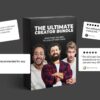
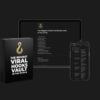
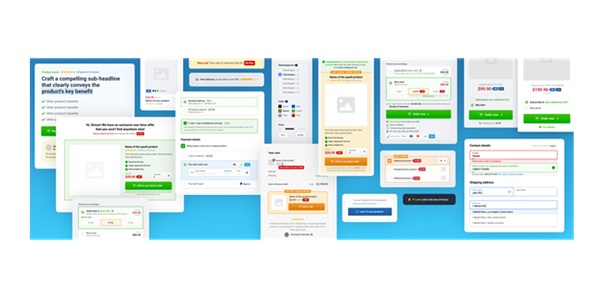
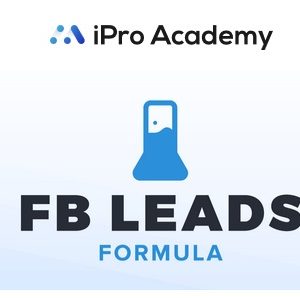
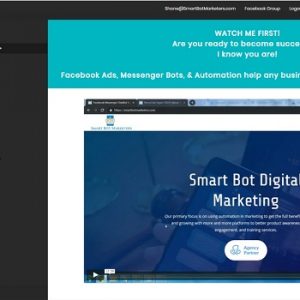





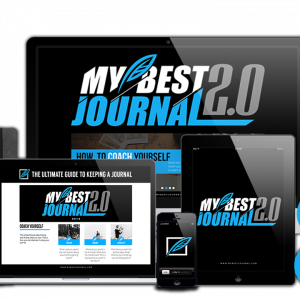
Reviews
There are no reviews yet.